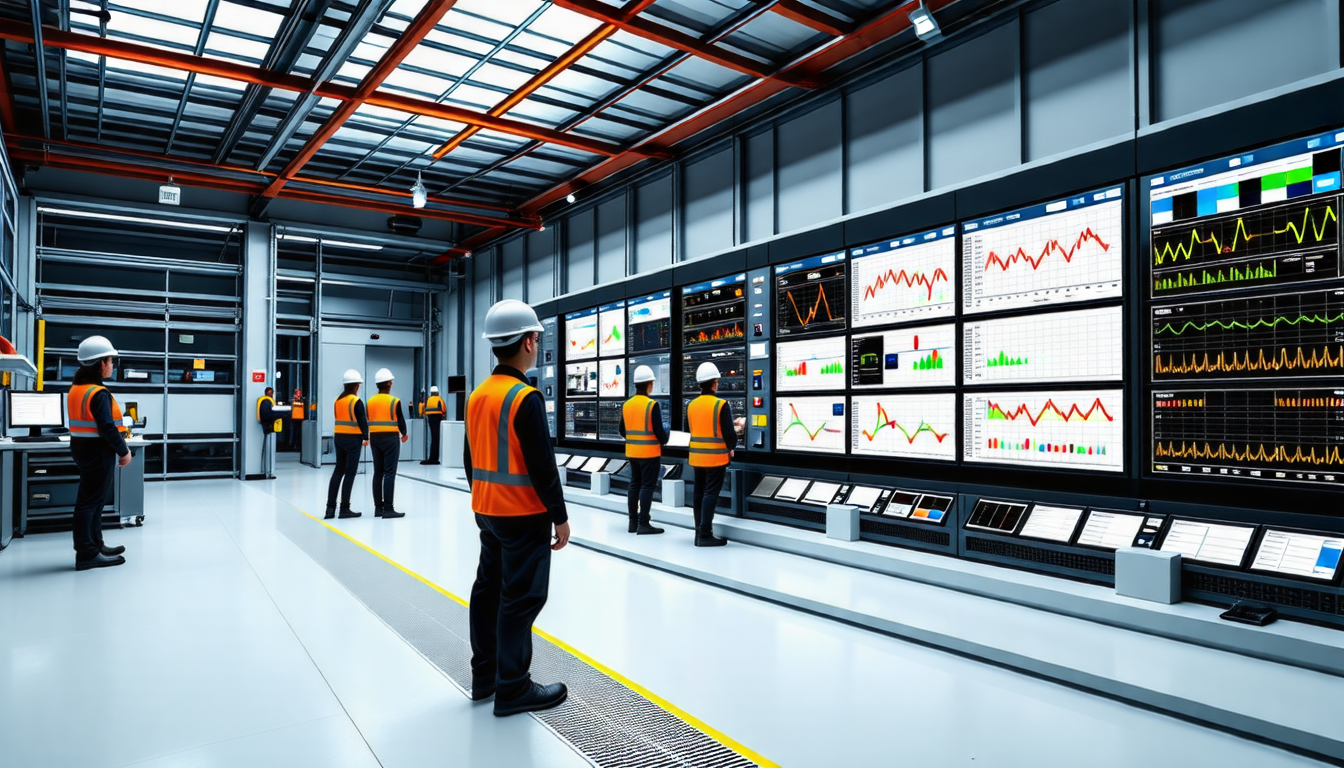|
In Brief
|
Choosing the right screen size for your industrial Mitsubishi Electric project is crucial for optimal performance and user experience. With a variety of options available, it’s essential to align your selection with the specific needs of your application. Screen size impacts visibility, interaction, and information clarity, directly influencing how effectively operators and viewers can engage with the content displayed. Factors such as viewing distance, installation environment, and intended use—whether for control rooms, visualizations, or large-scale presentations—must be considered. Additionally, understanding the capabilities of Mitsubishi Electric displays, from their human-machine interfaces to TFT panels, will help you make informed decisions that guarantee functionality and longevity in demanding industrial settings. This guide aims to assist you in making an educated choice tailored to your project requirements.
Selecting the appropriate screen size for an industrial project can significantly impact the overall effectiveness and usability of the system. Given the diversity of applications and environments where Mitsubishi Electric screens are used, understanding the parameters that affect screen size selection is essential for ensuring optimal performance. Below are some key considerations and best practices to guide your decision-making process.
Assessing the Viewing Distance
One of the foremost factors to evaluate when choosing a screen size is the viewing distance. The distance from which users will primarily view the display can greatly influence how large the screen should be. For instance, if the intended audience is situated farther away, a larger screen will be necessary to ensure readability and visibility of the displayed content. In industrial settings where operators might be working at various distances, adjustable or multiple display screens may provide a more flexible solution.
Understanding the Application Requirements
Different applications demand different levels of detail and screen size. For example, a control room monitoring system may require a larger screen for enhanced visibility of multiple data streams simultaneously, while a Human-Machine Interface (HMI) for direct input might function well with a smaller display. Utilizing Mitsubishi Electric’s advanced GOT2000 series allows the integration of larger screens, accommodating applications needing expanded interfaces and representations of data. Understanding the specific context of your project will aid in narrowing down the required screen dimensions.
Evaluating Screen Resolution
Screen resolution plays a critical role in ensuring that content appears sharp and legible. When deciding on the screen size, it’s important to consider the resolution capabilities of the Mitsubishi Electric panels. Larger screens require higher resolutions to maintain image clarity. For instance, a 19.2-inch Mitsubishi TFT panel might be necessary in scenarios demanding high-resolution visuals. Pairing the right screen size with the appropriate resolution ensures enhanced visibility and detail in industrial applications.
Considering Environmental Factors
The environment in which the screens will be used can also dictate the appropriate screen size. In harsh industrial settings, screens may need to be larger and designed to withstand specific conditions, such as vibrations, dust, and moisture. Mitsubishi Electric offers robust solutions tailored for various environmental challenges, ensuring that size selections are not only based on viewing distance and application needs but also on the external conditions that may affect display performance.
Analyzing Cost-effectiveness
Cost is a significant consideration in any industrial project. Generally, larger screens tend to be more expensive, not only in terms of purchase price but also for installation and maintenance. Therefore, it’s crucial to balance functionality with budget constraints. Smaller screens may serve cost-saving purposes and could be sufficient for certain applications. However, investing in larger displays may lead to long-term benefits through improved productivity and reduced errors, ultimately justifying the expense.
Understanding User Interaction
When selecting a screen size, understanding how users will interact with the display is essential. For touch-screen interfaces, larger screens can facilitate more effortless user interactions, minimizing hesitation or errors during operation. This is particularly relevant when using Mitsubishi Electric’s Human-Machine Interfaces (HMIs), as they benefit from larger touch areas that reduce fatigue and enhance workflow efficiency. Consider the specific tasks performed on the screens to determine the optimal size for interaction.
Utilizing Mitsubishi Electric’s Advanced Technologies
Mitsubishi Electric’s innovative technologies, such as the Diamond Vision displays and advanced video wall solutions, contribute significantly to the versatility of screen size selection. Depending on the design needs of your project, you may want to leverage these options to create larger-than-life displays that serve various industrial settings. They not only provide exceptional visibility but also deliver dynamic visuals that enhance engagement and comprehension of complex data.
Adapting to Future Needs
Lastly, it is important to consider the potential for future expansions or changes in project requirements. Choosing a screen size that can adapt to growing needs will save time and resources in the long run. Opt for solutions that allow for scalability—such as modular screens or configurations that support multiple displays. This foresight will help in making intelligent choices that accommodate future advancements or shifts in industrial needs.
Collaborating with Experts
Engaging with professionals who specialize in Mitsubishi Electric products can provide valuable insights into selecting the perfect screen size for your industrial projects. Experts can offer recommendations based on a comprehensive understanding of different display technologies, environmental factors, and human factors at play. Whether through consultation or technical resources, leveraging expert knowledge is a fruitful strategy for aligning your project requirements with the best solutions available.
Choosing the right screen size for your industrial Mitsubishi Electric project is critical for ensuring optimal performance and user experience. Start by assessing the physical dimensions of the space to determine how large the screen should be for effective visibility. Consider the resolution requirements to maintain a high-quality display and factor in the viewing distance from the screen to the audience, as this affects the ideal screen size. Additionally, evaluating the specific applications, such as HMI or video walls, can influence the decision. Ultimately, a thoughtful approach to these elements will lead to a more efficient and effective display solution.
